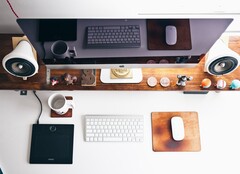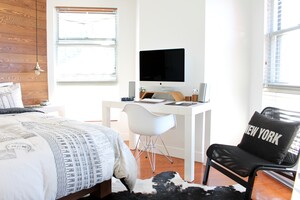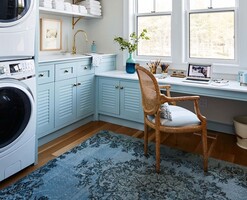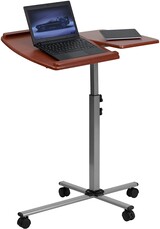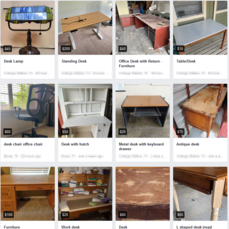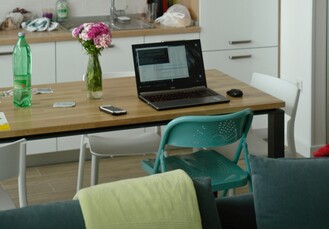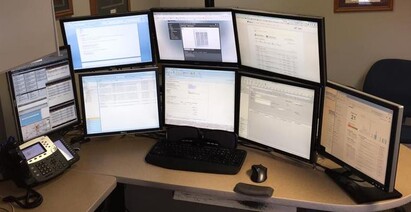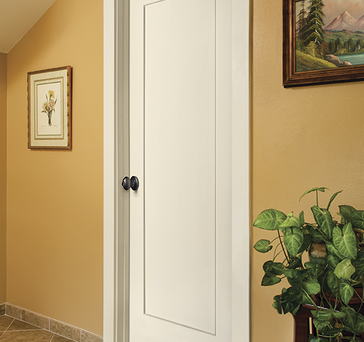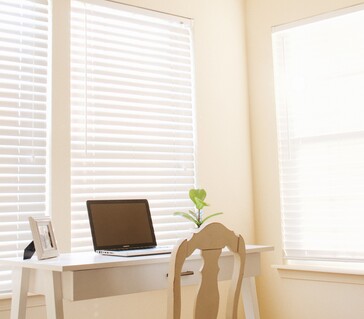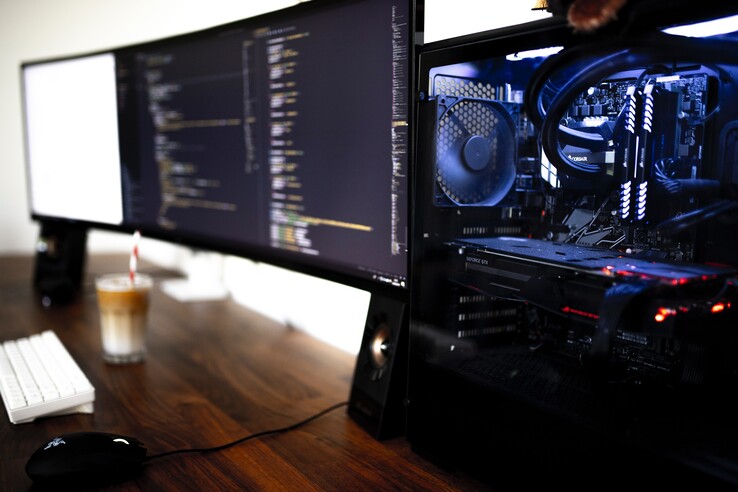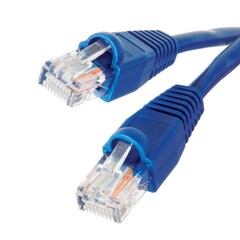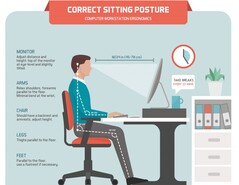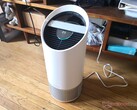More and more people are starting to work from home these days, and many are facing the new challenge of balancing working in their home. As such, the skill of setting up a home office to best match workflow can be difficult to learn, especially in a short time. This article will cover the basics of setting up an appropriate home office to best match your professional needs. Be sure to check out our other home office guides here:
What kind of home office do you need?
When setting up your home office, the first question to ask yourself is how long you're going to need it. Is this a temporary situation that will become irrelevant when you go back into the office after a few weeks, or will this be a long-term or permanent setup? We will cover both cases below, but the answer to this question will serve as the basis for every other decision here on out. It would be unwise to spend US$4,000+ on a home office you'll only use for a week, and it would be frustrating to use a makeshift setup for months or years.
Whether you're trying to set up something for a week or an entire career, there are some basic guidelines you should follow when setting up your home office. These can be boiled down to three main points:
- Separate: Your home office, no matter the size, should have its own space. This will help to separate your work life from your personal life. Working in bed can be relaxing, and working at the kitchen table is quick and easy, but these spaces blur the lines between your professional and personal selves. Even if it's just the corner of a room, having a separate space for work helps gives a clear delineation between where you work and where you live. It also helps give a clear start and end to the workday.
- Stationary: Whether you need it for a year or a single sick day, your home office should be stationary. Shifting to a new place during the workday can kill workflow and cause unnecessary stalls. Your home office should be a spot that neither you nor other members of the household need to move for any reason.
- Sensible: Your home office should be in a place that promotes good work habits and health. Setting up a home office in your bedroom closet would certainly keep things quiet, but the cramped and dimly lit space might drive you crazy after a few minutes. Working in the living room next to a window would be sunny and open, but constant household noise can get distracting. Everyone's home setup is different, but you should strive to find a spot that is near a window (for natural light), is quiet enough to concentrate on work, and doesn't contain distractions that may pull your focus away.
With these key points in mind, there are a few specific things to look for, depending on the time frame you need a home office for and the space you have available to you.
Temporary Home Office
If you are expecting to return to your office within a few weeks, investing in a home office may not be a wise fiscal choice. If you're not going to use the equipment or space after you return to the office, you may want to opt for a temporary setup. Here are a few things to look for.
Workspace setup
If you're not going to be working from home for too long or you don't want/need a home office after you return to your business's premises, lowering the cost of your temporary workspace is a high priority. It doesn't make much sense to invest a lot of time and money into something you'll be tearing down after a few days.
First, find and carve out a small space in your home. This could be a separate room that's barely used (if you have the space), but there's no need to rearrange a portion of your home for the next week. Clearing out a corner of your bedroom or living room will do in a pinch. Just make sure that your work area has clearly defined boundaries, and keep that space designated to work only. Also, choose a space that isn't heavily utilized by other members of the household to minimize noise and distractions.
As far as furniture is concerned, a temporary solution will likely have a low budget. If you only need the home office for a week, it doesn't make sense to purchase a huge L-shaped executive desk. A small desk or laptop cart may be all you need. You might also have a good work surface in your home: small end tables, TV trays, and wall shelves can be good temporary solutions. Just make sure you use a surface that can accommodate all the things you need for your work day: your computer/laptop, a notepad for notes, paperwork you might need, etc.
The same idea goes for your chair. You don't need a full-featured Herman Miller desk chair if you're only going to sit in it for a week or two. A dining room table chair may be adequate for a few days. Make sure your chair is comfortable to sit in for a workday. If it isn't, buying a seat pad or back support pad can be a cheaper option than buying a full office chair.
If you decide you need furniture to make your home office work, check local online marketplaces like Facebook or Craigslist. There's a good chance someone will be selling a used desk or chair in your town for a good price. Once you migrate back to your business's office complex, selling any furniture you don't need can help recoup some of the cost of setting up your home office as well.
Computer equipment and office supplies
For a temporary home office, a lot of thought must be put into what kind of equipment to buy.
First and foremost, check with your employer to see what supplies or equipment they may be able to purchase for you or reimburse to you. Your IT department may be able to loan you a computer for the time you work from home if they haven't already provided a laptop. Some employers may also give you an allowance to spend on office supplies, furniture, and technology needed for your job.
If you are responsible for supplying your home office, think through the kinds of tools you normally use. Also weigh the benefits and drawbacks of a desktop PC versus a laptop. Lastly, consider what, if any, specific programs you need. If your work involves an app that only works on macOS, your choice has been made for you. If your entire workday can be spent in a web browser, a Chromebook can be a cheap solution for a temporary setup.
Also consider office supplies you might need. Buying boxes of paper, pens, staples, and the like may leave you with a large surplus to manage once you no longer need your home office. If you'll be at home for a week, think through supplies that you absolutely cannot work without and stick to that list exclusively. Set a budget or strict list of items and don't deviate from it. You can then buy supplies in small quantities as you need them. Remember, it's easier to buy more supplies than return extras.
Permanent Home Office
If your position is designed to be done at home, or if you are starting a long-term remote assignment, there are different considerations you should weigh up when setting up your home office. You will spend a significant amount of time in your home office over the coming months or years, so taking the time to set it up and get acclimated to the new environment will pay off in the future.
Workspace setup
A long-term home office should be considered a permanent part of your home. As such, working on the couch or at the dining room table is probably not the best option. Don't feel that you have to dedicate an entire room to your new home office, but you should have a defined physical space that is clearly separated from the rest of your home.
If you do not have an unused room in your home, or if space is limited, carving out a dedicated section of a low-traffic room (like a spare bedroom, greenroom, etc.) is a good option. If you have a room that sees little to no use, it may be better served as a home office.
Also, consider the noise in the home. If you have children or loud roommates in your household, you will want to find a room with a door that can be closed, especially if you teleconference or call others during the workday. Your new home office should remain relatively free of clutter and should be well-lit. If possible, set up your office in a room with ample natural lighting. The room should also be relatively quiet; tiled rooms tend to echo, so avoid these if possible or consider a rug to kill noise if not.
Furniture choice comes down to personal taste and professional needs. A stationary desk is a good option, as it will act as a physical marker for where your work is done. The size of your desk comes down to how you work. Can you work on a laptop and don't need a lot of other tools? A simple and small desk may be what you need. Do you spread papers around and need room for your 14-monitor setup? A larger executive-style or L-shaped desk may suit you better. There are a few things to keep in mind for your desk.
First, consider the space into which you're placing it. Shelling out money on a gargantuan workspace isn't smart if you've only got a 5 ft x 3 ft corner to work in. Measure before you buy. There are a myriad of free furniture planning tools online, like IKEA's Home Planner.
Perhaps the most important piece of furniture you will purchase for your home office is your chair. A cheap desk can still function well as a desk, but a cheap chair can cause discomfort, distraction, and back problems that last after the workday is done. You don't need to spend US$1,000+ on a fancy leather office chair; a simple mesh chair with proper lumbar (lower back) support and good ergonomic design can work just as well. This is where some in-depth research will serve you well; read reviews, forums, and try some chairs out at your local office supply store.
One last consideration: If you will be hosting clients in your home office, aesthetics matter. Make sure to purchase clean, inoffensive, and professional-looking furniture for you and your clients/prospects.
Computer equipment and office supplies
If you will be working from home for a long-term assignment, or if your job is designed as a remote position, you will very likely have an allowance to spend on a computer, other technology, and any office supplies you may need. Be sure to check with your employer to see what they may order for you or what they may reimburse.
If you are responsible for purchasing your equipment, or if your employer gives you free choice, there are a few things to consider. Do you need to take your computer on the road to conferences, client meetings, or just to get out of the (home) office? If so, you'll need a laptop. Do you need a powerful machine, or do you want to leave your computer at your desk? A desktop can be much more powerful and cost-effective than a laptop, but keep in mind that it is immobile.
Do you need a separate phone and phone line for business calls? Do you need a printer, scanner, or fax machine? Would you prefer to have a monitor (and do you have room for one on your desk)? What about a standalone keyboard and mouse? Do you need a power strip to plug all these things in?
There are lots of pieces of equipment to consider. Keep in mind that while you can add things as the need arises, purchasing things at the time of initial setup can eliminate the awkward reshuffling of adding a new tool to your workspace.
As far as office supplies are concerned, evaluate your potential needs. Will you need physical paper for contracts, client profiles, training manuals, etc? Where will you store these documents? What about writing instruments? A mandatory list of supplies includes:
- A handful of good-quality pens and/or pencils
- A place to store writing instruments
- A simple notebook/notepad for jotting down ideas and notes
- A power strip for plugging in all of your computer equipment
- Paper to write down a task list for planning your day and week (this can be digital)
- Post-It notes or reusable adhesive (like Stick Tack or Blu-Tack) for posting up notes and reminders
If you aren't sure what office supplies you need to purchase, speak with other home-based co-workers and ask them what supplies they use in their own home office.
Tips and Suggested Equipment
How to set up a home office is a personal decision, but here are some pointers you may want to consider.
- Will you be doing teleconferencing (stand-ups, client meetings, etc.)? You may want to invest in a decent webcam (Logitech C615, US$39.99), microphone (Fifine USB microphone, US$69.99), and headphones/earbuds (Panasonic ErgoFit in-ear headphones, ~US$11.00).
- If you will teleconference, connect to a remote server, or otherwise need a fast and reliable network connection, consider plugging your computer directly into your modem/router via an Ethernet cable. Most home users will need either a Cat5e or Cat6 cable. Measure the distance between your router and computer before you buy, and make sure you leave enough length for some slack.
- If your router is too far to plug into directly, consider purchasing a powerline adapter (TP-Link AV1000 Gigabit powerline Ethernet adapter, US$49.99). While not as stable as a direct connection, a powerline adapter will offer a more reliable connection than Wi-Fi. A powerline adapter may be ideal if your home office is in a separate room from your router.
- Make sure your home office has adequate airflow. You may need to get a fan or humidifier to make things more comfortable.
- Make sure your home office has adequate artificial lighting if you plan to work during evenings or nights. A desk lamp may be a good idea.
- When setting up your desk, make sure your chair is at an appropriate height for ergonomic typing. Also, make sure your monitor is high or low enough so that you don't strain your neck. A good rule of thumb is to set the top of the display at or slightly below eye level. If you need to raise your monitor, you can get a monitor stand (AmazonBasics adjustable monitor stand, US$21.99), but a stack of books will work in a pinch.
- Be sure to get up and stretch every so often (1-2 times/hour). The Pomodoro Technique can help break up your workday into manageable chunks and encourage necessary breaks.
Conclusion
Setting up a home office is a fun, personal, and challenging task for anyone. There are a lot of benefits to working from home, but the key to success in a remote job is the workplace in your home. Whether you are working from home for a week or the next several years put some thought into the space in which you'll be building your career.
What are your thoughts on setting up a home office? Do you have any tips to share with others? Let us know in the comments below.


 Deutsch
Deutsch English
English Español
Español Français
Français Italiano
Italiano Nederlands
Nederlands Polski
Polski Português
Português Русский
Русский Türkçe
Türkçe Svenska
Svenska Chinese
Chinese Magyar
Magyar